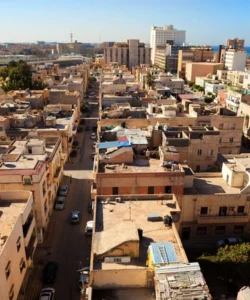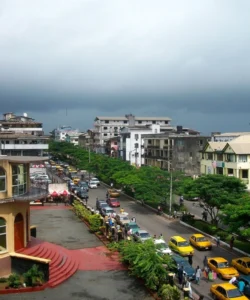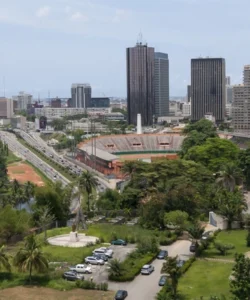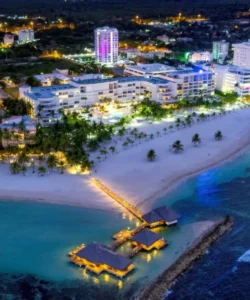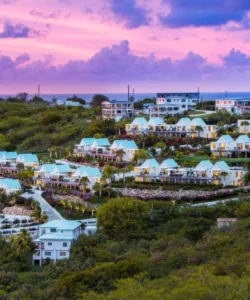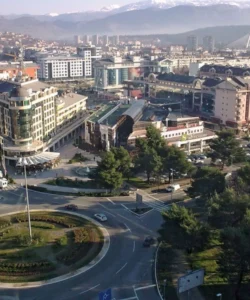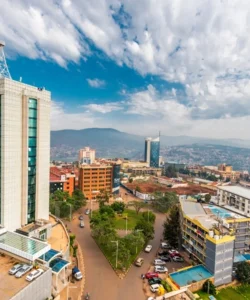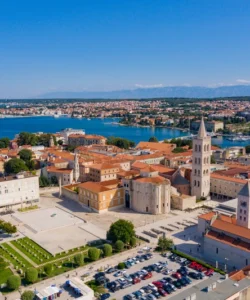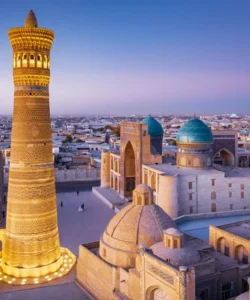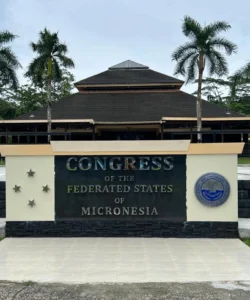Algeria, officially the People’s Democratic Republic of Algeria, is a large country located in North Africa, bordering the Mediterranean Sea.
Area: Approximately 2,381,741 sq km, making it the largest country in Africa. About 80% of the country is desert, steppes, wasteland, and mountains.
Population: Estimated at around 46.8 million in 2024. The majority of the population (91%) lives along the Mediterranean coast on 12% of the country’s total land mass.
Capital: Algiers
Major Cities: Besides Algiers, other major cities include Oran, Sétif, Djelfa, Batna, and Constantine.
Language: The official languages are Arabic and Amazigh (Berber). Algerian Arabic is the most widely spoken dialect. French is also widely used, especially in business and education.
Currency: Algerian Dinar (DZD)
Religion: Predominantly Sunni Islam of the Maliki school of jurisprudence, with nearly 98% of the population identifying as Muslim.
Attractions & Wonders:
Algeria boasts a rich history and diverse landscapes, offering numerous attractions:
- Roman Ruins:
- Djémila: A well-preserved Roman town showcasing unique ancient Roman architectural styles adapted to a mountain landscape. It features ancient houses, a theatre, temples, and a forum with a fabulous arch.
- Tipasa: Roman ruins by the sea, a former Punic trading post that became a strategic Roman base. It exhibits a blend of Phoenician, Roman, Paleochristian, and Byzantine ruins.
- Timgad: A consummate example of Roman town planning, founded by Emperor Trajan in AD 100 with a precise orthogonal layout. Its ruins include the Trajan Arch and a well-preserved street grid.
- Historic Sites:
- Kasbah of Algiers: A UNESCO World Heritage site, this historic citadel and traditional quarter preserves ancient mosques, Ottoman-style palaces, and a traditional urban structure.
- Maqam Echahid (Martyr’s Memorial): A prominent monument in Algiers dedicated to the memory of the Algerian War of Independence.
- Natural Wonders & Landscapes:
- Tassili n’Ajjer: A vast sandstone plateau known for its incredible rock formations and over 15,000 rock paintings and carvings, making it one of the richest prehistoric rock art sites in the world. A UNESCO World Heritage Site.
- M’Zab Valley: Another UNESCO site, featuring five ancient fortified villages (ksour) adapted to the harsh desert environment, built by the Ibadites.
- Other notable sites:
- Al Qal’a of Beni Hammad (UNESCO World Heritage site)
- Communal Museum of Laghouat
Architecture:
Algerian architecture reflects its long and varied history, incorporating influences from Numidian, Roman, Byzantine, Islamic, Ottoman, and French colonial periods.
- Ancient Architecture:
- Royal Mausoleum of Mauretania (late 1st century BC or early 1st century AD)
- Madghacen mausoleum of king Madghis (3rd century BC)
- Roman bridges, arches, and city layouts (like Timgad)
- Islamic Architecture:
- Great Mosque of Tlemcen (1082)
- Great Mosque of Algiers (1096–1097)
- Great Mosque of Nedroma (1145)
- Colonial and Post-Colonial:
- The Theatre Municipal (Baroque Revival)
- Notre Dame d’Afrique (Byzantine Revival)
- Grande Poste d’Alger (Arabisance style)
- Martyrs’ Memorial, Algiers (Post-colonial modern design)
- Djamaa el Djazaïr (contemporary mosque, one of the largest in the world)
Roads:
Algeria has an extensive road network, including over 96,000 km of paved roads and 29,000 km of unpaved roads.
- Major Highways:
- East-West Highway: The most important road infrastructure, a 1,216 km six-lane expressway connecting the Tunisian border to the Moroccan border, linking major cities like Constantine, Sétif, Algiers, and Oran.
- Highway of the Hauts Plateaux: A planned highway running parallel to the East-West Highway through the steppe region.
- Scenic and Challenging Roads:
- Trans-Sahara Highway: A 4,500 km route through Algeria, Niger, and Nigeria, offering a true adventure.
- Mountain passes like Tikjda Pass, Mount Chelia, Col de Tirourda, and Assekrem.
Hotels:
Algeria offers a range of accommodation options, from luxury resorts to more budget-friendly hotels, particularly in major cities like Algiers and Oran. Some notable hotels include:
- Sheraton Club des Pins Resort (Staoueli)
- Hotel El Aurassi (Algiers)
- Hyatt Regency Algiers Airport
- Hotel El-Djazair (Algiers)
- Hôtel RALF (Algiers)
Restaurants & Cuisine:
Algerian cuisine is a vibrant blend of Mediterranean and North African influences, with a focus on fresh vegetables, cereals, and meats (especially lamb, beef, and poultry). Bread and olive oil are staples.
- Key Ingredients & Spices: Dried red chili, caraway, cumin, cinnamon, turmeric, ginger, paprika, saffron, and coriander are commonly used.
- Popular Dishes:
- Couscous: The national dish, often served with vegetables and meat.
- Chorba frik (or Jari): A tomato-based soup with lamb.
- Bourek: Fried spring rolls with various stuffings (meat, tuna, potato, cheese).
- Mhadjeb: Flatbread stuffed with onions and tomato sauce.
- Shakshouka: A mixture of onions, tomato, bell peppers, zucchini, and eggs.
- Dobara: Chickpea soup.
- Tajine mtewem: Meatballs cooked in a tagine.
- Desserts: Kalb-el-louz (semolina cake with almonds and honey) and Makroud el louse (almond cookies) are popular.
- Recommended Restaurants (examples):
- Yulmaz (Algiers)
- Dar Yemma Casbah (Algiers)
- Restaurant Ighrassen (Constantine)
- La Palmeraie Restaurant (Algiers)

